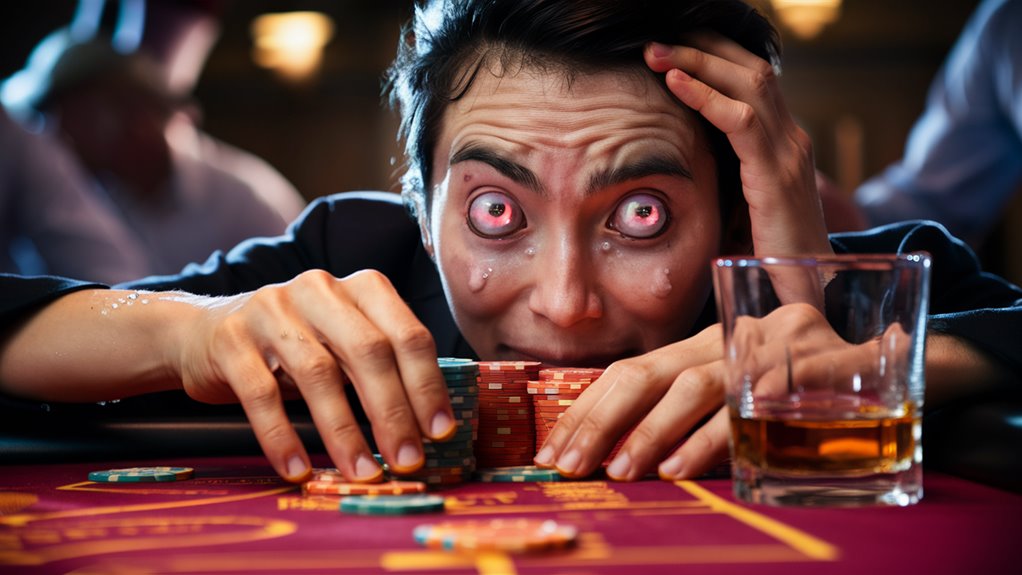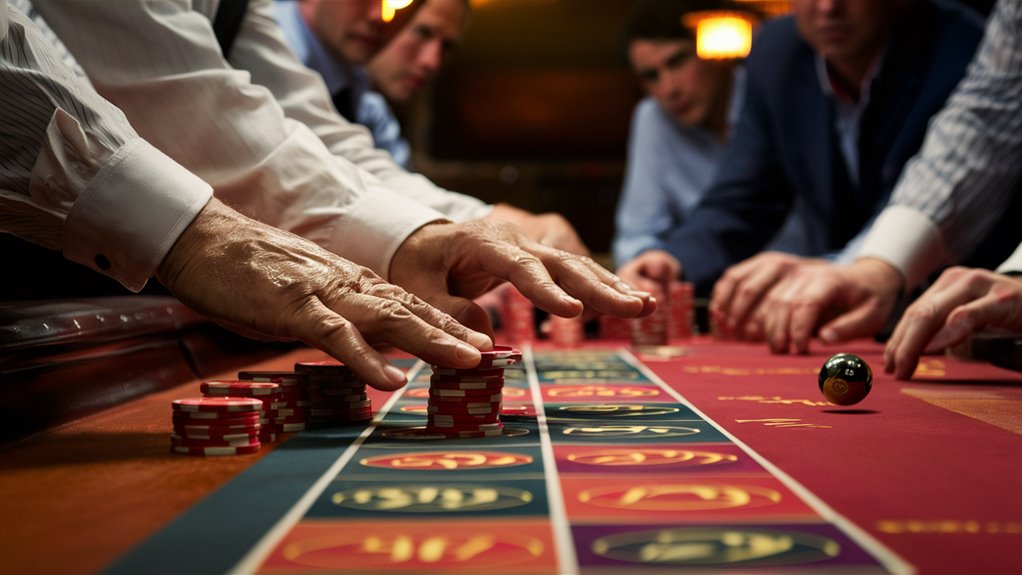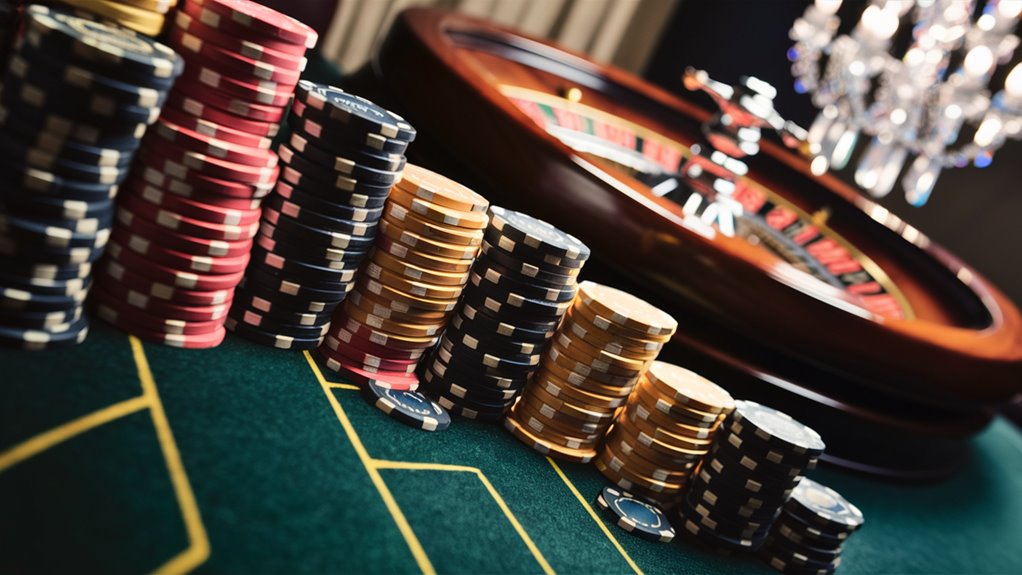How Players Act: Casino Table Study

The Role of the Body in Gaming Choices
The brain reacts strongly to casino games, setting urges that keep players sitting. Near wins make dopamine spike like real wins do, starting a loop of happy feelings. The brain’s wish parts start when bets are made, adding fun even before we know the end.
Group Actions at the Table
Talking among players shapes how they bet and how long they stay. Studies show players bet 23% more near winners and 64% change their moves after seeing others win. This group feeling makes the space buzz, pulling more in. 신뢰할 수 있는 리뷰 보기
Designing Spaces for Longer Stays
Casino designers use smart ways to keep players:
- Hold it at 70°F for sharp minds
- Place high bet spots with care
- Fix lights and sound for a good mood
- Use seats that hold one for long plays
How Minds Get Hooked
A blend of random gifts and unsure win odds keeps players’ eyes. They feel:
- Better sense of risk-reward
- More happiness in the wait
- Sharper at seeing patterns
- Deeper ties to results
These elements help craft tempting deals that guide player moves at the tables.
Exploring Near Wins in Gambling
The Mind Trick of Almost Wins

The mind’s response to near wins is like that of real wins. When a game almost hits, the brain lights up and gives out dopamine, even without a real win. This happens in both old and new games.
Thinking “What If”
Thinking about what could have been is common in gambling, as near wins start thoughts on missed shots. Brain scans show more life in reward spots at these times, pushing players to keep going and try their luck.
Clever Game Making
Game makers put in almost-win rates of about 30% to keep players’ minds in the game. This mix of letdown and hope makes games last. The pull from these near misses hooks players better than lots of wins or losses.
Key Brain Signs
- Dopamine rises with near wins
- Reward spots in the brain light up like with real wins
- Drive spots get a jump
- Brain zones that handle near wins turn on
Using almost-wins in games taps into deep brain tricks and push-and-pull ideas, forming game setups that play on basic brain moves. Partnerships Can Drive More Visitors
Understanding Group Dynamics at Casino Tables
Studying How Players Communicate
Group moves at tables start complex talks that change betting picks and how much risk one takes. Research finds 64% of players change their ways by watching others, often with new ones following pros.
Group Moves Matter
Fun Through Rivalry
The mood of table games shows a mix of joining with and fighting against, where players stand off against each other while all take on the house. Stats say 47% more playing happens with group fun than playing solo.


